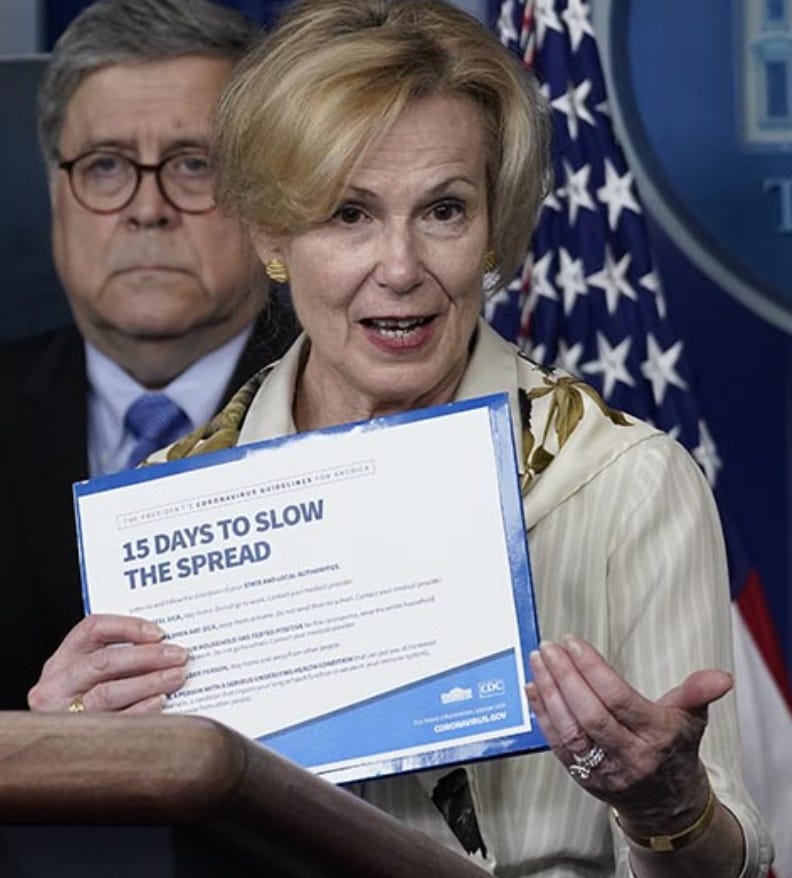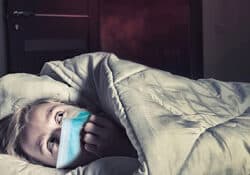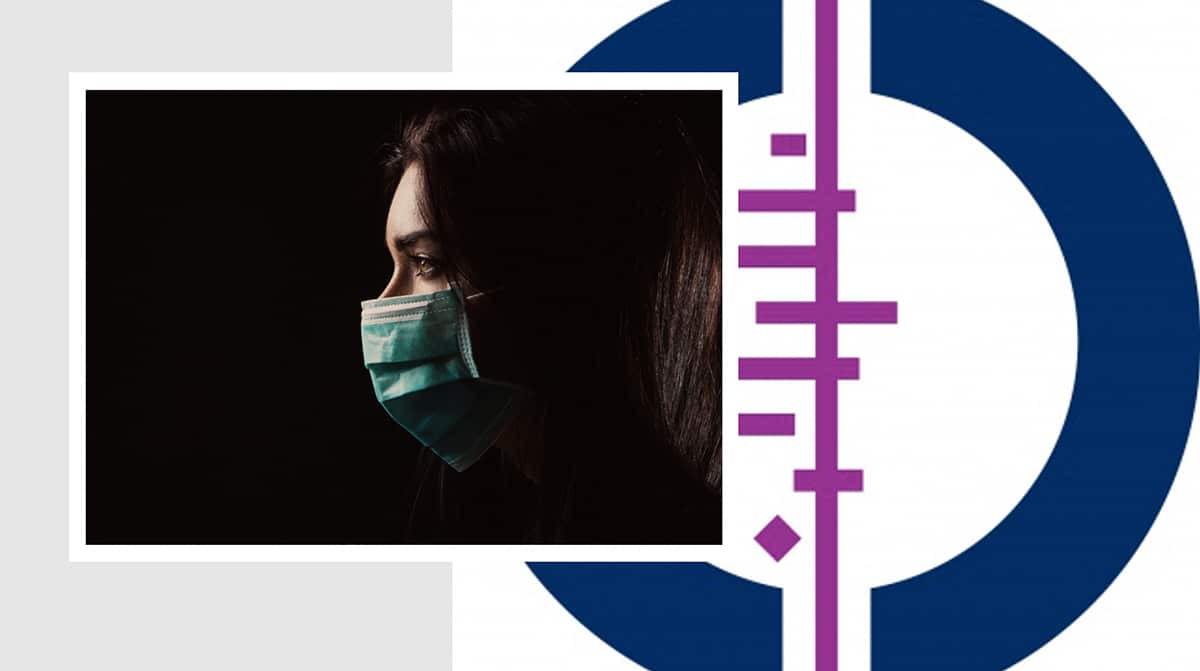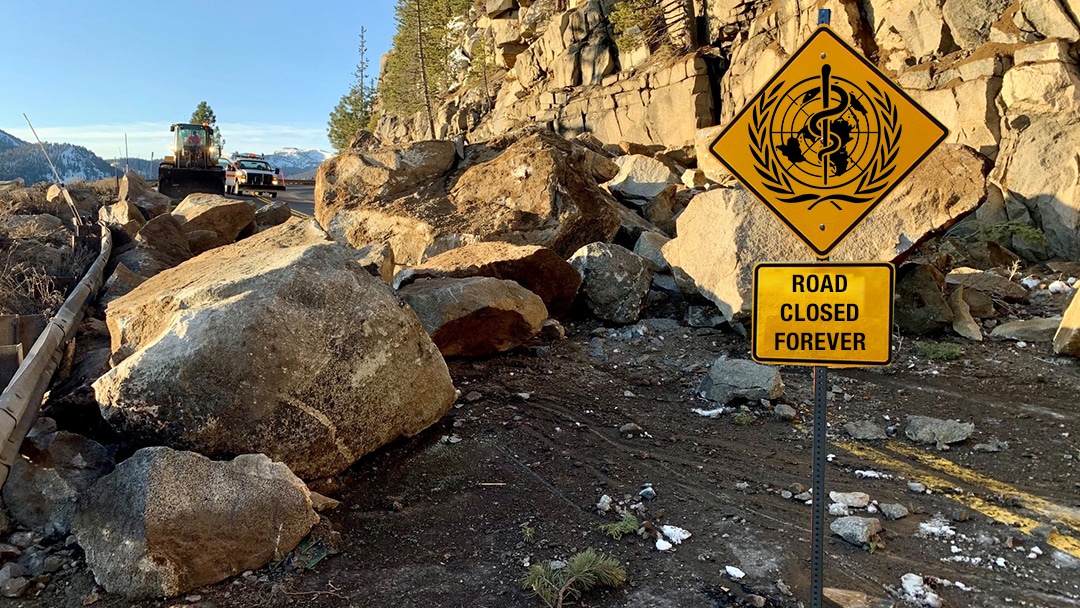
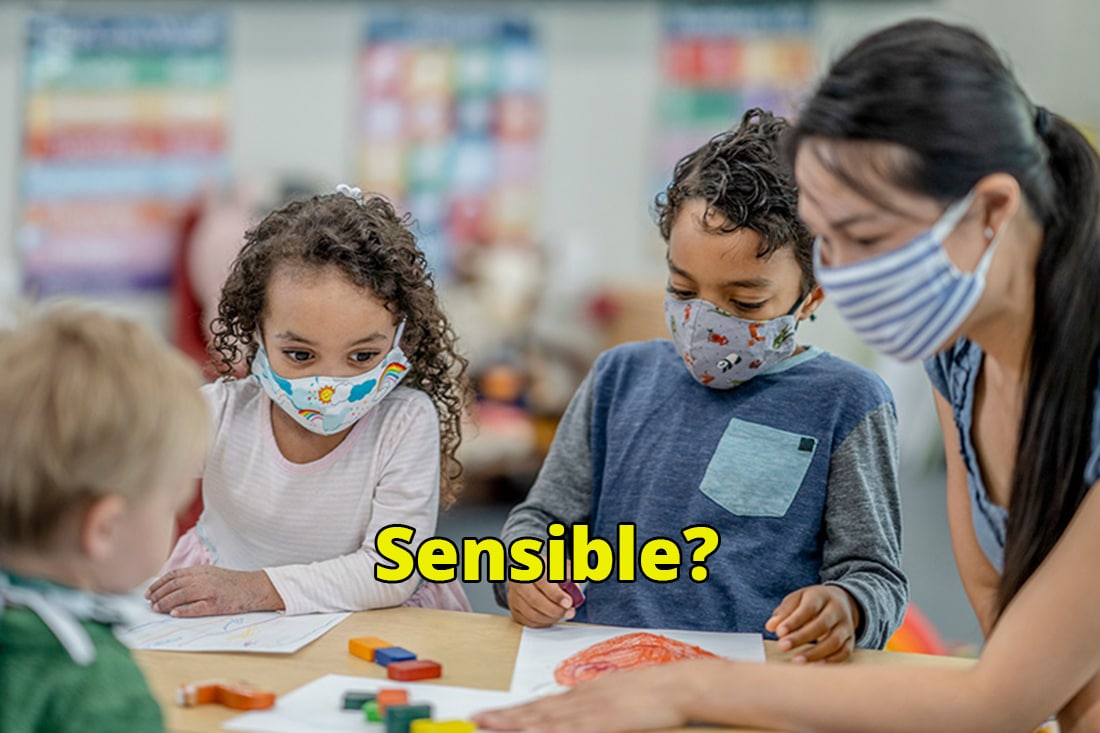
A Sensible Approach to Handling the Pandemic
by A Midwestern Doctor | Jun 23, 2022
Like many of you, I firmly believe the COVID-19 pandemic response was horrifically mishandled and was likely worse than having done nothing at all. In the previous article, I made the case that the cornerstones of the pandemic response: hand washing, masking, testing, and social distancing, and worst of all lockdowns were for all practical purposes theater and based on the existing scientific evidence should never have been implemented.
In a previous series on corruption within the federal government that showed how detailed documented proof corruption shaped the pandemic response, I highlighted a report from Congress’s own watchdog group. The GAO report found that federal employees in all the government agencies that shaped the pandemic response reported witnessing political interference that resulted in the alteration or suppression of scientific findings and scientific evidence not being followed when making science-based policy decisions. The GAO report also found the leadership of each of these agencies suppressed reported concerns of corruption from being investigated or addressed.
It is hence somewhat understandable that the pandemic response was catastrophically mishandled, and even more important to understand that the corruption which allowed that incompetence and malfeasance to happen has not been addressed in any way whatsoever. As a result, the best defense against these policies in the future is a fully informed public that understands why they are being done rather than simply “trusting the experts.”
However, to briefly play devil’s advocate, one of the major changes in perspective I have had over the last decade has been seeing problems from the perspective of an administrator and the lead physician. In these roles, you will often find that there is no good option for the problem you are ultimately responsible for addressing, and your duty thus becomes pushing through the least bad option, which often still has many significant shortcomings.
Prior to also being in the position where I shouldered a massive amount of responsibility, it was always very easy to critique the shortcomings of the option leadership implemented, and it was not fundamentally possible for me to grasp how difficult many of these choices are to make. For this reason, I cannot only describe how the pandemic response was mishandled; I must also propose an alternative solution.
Most of the ideas detailed here were those that I developed after thinking through the entire problem. As a result, I know that this list is incomplete, and there are many other excellent ideas I never came across that likewise should have been considered and opened to debate during the development of the pandemic response.
Lastly, because this is a frequent topic of contention: I hold the position that SARS-CoV-2 is an extremely dangerous virus for those who are susceptible to it, and I also believe the overall danger of SARS-CoV-2 to society was massively overstated in order to create a pandemic industry. As these are seemingly contradictory positions, it is understandable why this can become such a polarizing topic. For those wishing to know more, I summarized my thoughts in this recent comment, and further discussed it here.
How to Handle a Pandemic
When you have a new contagious disease emerge, there are two options:
Contain it OR allow the population to develop herd immunity to the disease
Given how contagious this respiratory virus was, the only possible method that might have contained SARS-CoV-2 was by locking down air travel from countries with the virus at the start of the epidemic. That did not happen (many members of the government actively sabotaged attempts to do so), so attempting to contain it later, even with extremely draconian lockdowns was an exercise in futility.
The examples of China, Australia, and New Zealand likewise show that total early (but not early enough) lockdowns may slow the spread at enormous cost of collateral damage, but failed to contain SARS-CoV-2 or change the course of the disease in the long run.
If the goal was instead to develop herd immunity, there were only two possible ways to do it:
Through mass vaccination OR through natural exposure.
As I outlined in the previous article and this article, the mass vaccination strategy was also an exercise in futility and would most likely prevent rather than create herd immunity.
If the goal was to develop herd immunity through natural exposure, then there were two options:
Let herd immunity develop on its own OR develop herd immunity in a manner that creates the minimum amount of collateral damage in the process.
I do not believe this chain of logic was complex-it was obvious to myself and others from the start of the pandemic. However instead of doing either of the last two options, we opted to prevent herd immunity from occurring and to inflict the maximum collateral damage in the process. Understanding why this could have possibly happened requires a brief segue into game theory.
Game Theory
A long time ago, I was a somewhat successful competitive gamer and almost exclusively used highly unorthodox strategies that were normally shunned by the gaming community (which may have predisposed me to going outside of the medical box). Gaming was very educational because I discovered all the same cognitive blind spots I observed within the gaming community applied to many other parts of society including the medical community.
In general, despite making massive personal investments to become successful in the game, most gamers in my gaming communities would refuse to go outside the mental boxes they had created regarding what was possible or could be done. I believe this loss creativity is one of the primary shortcomings of the modern educational system and many commentators have remarked it must be surmounted for America to remain economically competitive as a superpower. On that note, I would like to briefly highlight two components of game theory:
•A concept that sometimes arises in strategy games is known as “inevitability,” which represents the idea that if the current game state is allowed to progress in its current state, it will eventually (often much, much later) cause one player to lose and grant victory to the other.
•Typically in gaming, people wishing to become better study algorithmic strategies that emphasize optimizing your gain to loss ratio with each move so that over time you will accumulate more resources than your opponent that can eventually be leveraged to a victory.
One of the most curious things I repeatedly observed when gaming was that most of my opponents had a massive blind spot to inevitability, so I could often bait them into making a move that directly created a resource advantage for them in return for giving me inevitability. This is somewhat analogous in chess to sacrificing your Queen to obtain checkmate 20 moves later. Because of this blind spot, I was often able to beat much better players than myself who had put much more work than I had into the game.
Pandemic Mitigation Strategies
In the practice of medicine, I have noticed inevitability is often completely disregarded in the management of patients and the focus is always on how to immediately address the current problem in front of you. This approach often becomes exceedingly expensive and created the strong economic incentive for preventative medicine; unfortunately, that movement has largely been co-opted to sell medical products that do not actually improve long term health outcomes.
As I watched the pandemic response unfold, one of the truly horrifying moments for me was when it dawned on me that everyone was laser focused on making resource optimizing plays (“We can’t afford to let a single person die from Covid!!”), at the expense of sacrificing inevitability. As a result of the mass blindness to inevitably, nothing has fundamentally changed from the start of the pandemic and an enormous degree of collateral damage (both economically and medically for those stricken with Covid) resulted from the chosen strategy.
In contrast, let’s consider the two actually viable approaches outlined before. Africa was initially forecast to be the worst hit by COVID-19 because they had an almost non-existent public health infrastructure or ability to contain the spread of the virus. Most of Africa ignored Western advice on managing the virus, they had less casualties than the West and Covid is now finished there. The Amish likewise did the same and were the first group in the United States to achieve herd immunity. This is important to mention because Africa and the Amish have done significantly better than most of the Western nations at handling the pandemic. However, while a hands-off approach was successful, a hands on approach to minimize the collateral damage from developing herd immunity could have also been conducted.
Surviving Herd Immunity
From the get-go, it was clear that the only viable solution to the pandemic was to develop a method of treating the disease and have that serve as a bridge to allowing the population develop herd immunity. Unfortunately, a central dogma in Western Medicine is that (with a few exceptions) you cannot treat viruses-you can only prevent them with vaccines. I have long theorized this belief exists because most of the effective antiviral therapies are not under patent and are effective against a broad spectrum of viruses, so by allowing any of the antiviral therapeutics (or treatment strategies) to enter the market, it axes the billions that are made each year from attempting to address viruses with products like vaccines.
However, while the need for a treatment protocol was abundantly clear from the start and dozens of effective approaches were developed, no guidelines for treating patients prior to hospitalization were ever provided to health care providers. Instead, patients at the Emergency Room were told to take Tylenol or Ibuprofen (which in many cases made COVID significantly more deadly), sent home and told to come back if they were in respiratory failure so they could be admitted to the hospital.
There were a large number of very unusual ways SARS-CoV-2 behaved and if you took the time to understand them, it opened up the doors to make treating the virus much easier to manage (this unfortunately needs to be the subject of its own article).
I was able to do this on my own with minimal resources or outside help, so I do not believe it was costly or complicated. Unfortunately, there is a steadfast resistance in the medical community to translating research discoveries to clinically meaningful applications which has resulted in it typically taking years (17 years is a common estimate) for an important scientific discovery to change clinical care of patients. Translational medicine has been a longstanding problem within medicine, and like other many parts of the scientific process, became much worse with COVID-19.
Throughout the pandemic, the medical field was content to let patients die and write the whole things off as a tragedy they were powerless to do anything about, but simultaneously completely unwilling to try something differing from the official guidelines for patients they knew would otherwise die. Somewhat analogously, from the very start of the pandemic in America (I had an acceptable self-treatment protocol at that point), while most physicians were terrified to be around COVID-19 patients (this one reason why they received suboptimal treatment in the hospitals), I repeatedly volunteered to be on the front lines wherever I could. This allowed me to become comfortable managing the illness and subsequently gave me the experience that prevented those close to me from dying.
Many MDs I spoke with at the start of pandemic (including directors of hospitals and intensive care units) were all in agreement the single most important measure was to develop an outpatient (prior to hospitalization) treatment protocol so the hospitals would not be overwhelmed, and the disease could be reasonably managed within the population. This of course never happened and instead lockdowns were phased in to first prevent a potential overload of the hospitals. I’m sure you all remember this lovely lady (we will get to her in the final part of this series):
In addition to developing complex treatment protocols (which were sorely needed for patients inside and patients outside of hospitals), there were also very simple approaches that had ample evidence from the start of the pandemic. Some of the simplest preventative measures and treatment protocols that could have been proposed included the following:
•Distributing Vitamin D to the population.
•Distributing Vitamin C to the population.
•Distributing Zinc to the population.
•Distributing Aspirin to the population.
•Encouraging disinfection of the nose sinuses and throat at the start of the disease process (this also could have been done in emergency rooms to prevent the common occurrence of Covid patients from infecting others).
•Making hydroxychloroquine available over the counter to individuals with Covid like symptoms.
• Making ivermectin available over the counter to individuals with Covid like symptoms.
•Making the supply of government purchased monoclonal antibodies easily available to ill individuals that had not yet been hospitalized for COVID-19.
•Setting up outpatient treatment centers which provided home care instructions, pulse oximeters and home oxygen concentrators for individuals with moderate Covid symptoms. If this had been done, many people who were discharged from the ER and subsequently hospitalized could have instead visited one of these centers for a fraction of the cost and likely never have required hospitalization.
•Prioritizing initiation of treatment at the start of the disease process, as this is when it is by far the most likely to succeed (as opposed to the do nothing approach that was widely utilized). Likewise, most of the effective treatments protocols developed throughout the course of the pandemic were never used.
I also believe a simple educational program of proper breathing methods to mitigate the effects of COVID-19 would have been very easy to make available to the population and could have saved a lot of lives, but this might have been too controversial to implement. I likewise feel public education campaigns aimed at addressing the three common risk factors for severe COVID-19 (diabetes, obesity, and pre-existing anxiety disorders) would have been quite helpful but sadly also were most likely too controversial to implement.
Most of my suggestions were not rocket science and many were done in much poorer countries with non-existent public health infrastructures (such as India) where they resulted in a much greater degree of success than anything that happened within the United States. However, many of these ideas did not even occur to most of the doctors I spoke to throughout the pandemic.
For example, by far the most useful part of hospitalized care for COVID-19 is receiving oxygen, which then raised the obvious question: why not make it available to patients at home? I have numerous patients, friends, and relatives I obtained home oxygen for which then kept them out of the hospital and saved their lives (one also needed a pressurized breathing mask which can easily be obtained outside of hospitals). This seems like a very simple idea, but it was virtually unheard of.
Strategically Developing Herd Immunity
In addition to being able to effectively treat COVID-19, to minimize the collateral damage from the process it was also critically important to minimize the population’s susceptibility to it while herd immunity emerged. Although the COVID compliance campaigns at least claimed to being trying to do this, they were poorly designed for this purpose and there were much better alternatives for this purpose.
Fundamentally, there were two critical facts to understand:
•Susceptibility to viral infections is directly proportional to the initial infectious dose (how many virus particles they were exposed to).
•Susceptibility to COVID-19 significantly varied in the population.
I thus argue the correct approach in pandemic management was to:
•Reduce the infectious doses individuals were exposed to
•Optimize everyone’s resistance to infection before an inevitable exposure happened
•Temporarily isolate or quarantine the most vulnerable members of society while herd immunity developed throughout the rest of the population (this included taking measures to prevent transmission from healthcare workers caring for them).
This likewise was not rocket science and much of it was also endorsed by the nearly one million doctors and academics who signed the Great Barrington Declaration. As many of you know, the leadership of the NIH (who failed catastrophically in handling the Covid epidemic) was later shown through a FOIA request to have prioritized silencing this perspective. Many of the deaths from COVID-19 were a direct result of terrible health policies that caused COVID-19 to spread like a wildfire through the nursing homes. While “leaders” such as those within the NIH either did nothing to prevent this occurring or directly caused it to happen, many medical professionals including the authors of the Great Barrington Declaration specifically stated should not be allowed to occur under any circumstances, in many cases this was emphasized before the pandemic had even entered the country.
Reducing Infectious Doses
While the Covid Compliance Campaigns were poorly suited to reduce infectious doses of SARS-CoV-2, they could have easily been modified to have accomplished this goal.
Masking: I was torn for a while on if being masked while infected reduced the infectious dose you exposed others to (this was the only plausible justification for mass masking). Given that multiple studies have since emerged showing masking has no effect on the spread COVID-19, I feel safe to say it does not. I do however believe that while N95 (or higher grade) masks do not fully prevent the exposure to COVID-19, they do reduce the infectious dose.
For this reason, widespread availability of N-95s had potential value as a public health measure that could have been made possible with appropriate leadership decisions (note: fitted N95s work much better than KN95s and the majority of KN95s are counterfeited). Near the start of the pandemic, trials should have been immediately initiated to determine if N95 masking had any affect on patient hospitalizations. This would have both settled the masking question and if a benefit was shown, created the political will to produce the N95 supply that was needed.
Temperature Checks: As discussed previously, the widely used forehead temperature checks missed too many fevers and should have been calibrated to a lower temperature threshold that required a subsequent measurement from within the mouth. Likewise, it was often very easy to see if someone looked sick and manually select them for taking a mouth temperature.
Testing: For many reasons, the PCR tests were worthless, however the antigen tests had significant value (they rarely get false positives and provide immediate results).
To illustrate this principle: At the hospital I worked out throughout the pandemic, it was standard practice to order a PCR test for a patient who showed up and appeared ill enough to need to be hospitalized (as it was known the PCR test would normally come out positive), whereas with a patient who did not appear to require hospitalization, an antigen test would be ordered that would typically come up negative allowing the patient to be sent home. Likewise, all employee testing was done with antigen tests, as the hospital we could not afford to send staff home who were not actually sick.
Note: The somewhat unusual structure of my hospital prevented the financial incentives to hospitalize and ventilate as many patients as possible from influencing decisions by the medical staff, and it would not surprise me if in places where those incentives were in place that would have resulted in a greater proportion of PCR tests being ordered.
If at home tests (that were not reported to the health department) had been made available to the general public along with instructions to only take them at the onset of symptoms, most of the U.S. population would have taken them as instructed and then isolated at home while they cleared the virus thereby not exposing people around them to high infectious doses of Sars-CoV-2 (additionally they would have lost a great deal of anxiety over if they had contracted Covid which would have been detrimental to the pandemic industry). Many people petitioned for home antigen tests throughout the pandemic, but while the FDA was all too happy to push questionable PCR tests along, it took much, much longer to have access to rapid tests.
Outdoor activity: Covid is much more likely to spread indoors than outdoors, and individuals are the least susceptible to viral infections when outside during the summer due to the rapid exchange of air, sterilizing action of sunlight and immune boosting effects of sunlight and outdoor activity. For some reason policy makers did not grasp this and over the summer of 2020, either strict indoor lockdowns or at least social distancing while outside were encouraged. I felt strongly enough about the inevitable problems that would occur later in the winter if the population was prevented from gaining herd immunity over the summer that I (like many others) spoke out publicly on this issue.
Disinfecting Practices: Much in the same way there was no value to social distancing because the virus did not spread by droplets (leading repeatedly to absurd recommendations such as engaging in sexual activities with your partner at least 6 feet away from them), there was no value to disinfecting surfaces because the COVID-19 did not spread by touching contaminated surfaces.
However, there was actually an incredibly simple and practical solution to this problem: disinfect the air. I know of two economical and extremely feasible ways to do this, both of which take advantage of the fact SARS-CoV-2 is an extremely fragile virus. The first was to use an ozone generator to generate ozone gas to sterilize the air. The second one was to use UV lights to sterilize the air. Each of these was cheap, required minimal effort to deploy, was effective and were sporadically used throughout the pandemic.
Some controversy surrounds the ozone disinfection approach as ozone is viewed as a toxic gas (to be more accurate, the toxic gasses are primarily the nitrogen compounds also generated during the ozone formation process and this can be avoided with a proper setup). However at the low concentrations required for ozone to rapidly neutralize SARS-CoV-2, the risk of toxicity is minimal, and as ozone rapidly degrades, a room can quickly be sterilized while the participants are not present and be gone by the time they return.
Due to ozone’s ability to diffuse everywhere, it can get into every crevice (this is why it works so well for decontaminating mold in buildings), and has also been used to effectively disinfect contaminated medical equipment (one of my wishes is that someday cheaply available ozone can be used to disinfect hospitals as infections acquired there are an enormous problem). During the pandemic, I saw examples from South America of ozone tunnels people would hold their breath, enter, be completely disinfected by ozone gas and then exit, but as far as I know, this approach never caught on in English speaking countries.
While ozone was somewhat controversial due to it being widely viewed as a toxic gas (despite having many medical applications), that same controversy does not exist with ultraviolet light. Ultraviolet light, like ozone, will rapidly inactivate the SARS-CoV-2 virus, but unlike ozone will not sterilize areas that light cannot directly contact (however, provided a UV system is present within the ventilation system, this doesn’t really matter).
That said, there is still some controversy towards the UV approach as a significant portion of the medical community that believes all sunlight is bad for you and should be avoided due to its UV content. As you might guess, I vehemently disagree with this position and believe reduced sunlight exposure (such as from the lockdowns) was one of the factors that significantly worsened the impact of the pandemic.
As UV light was the obvious solution to “stop the spread” many parties investigated this. Before long this company was able to identify a wavelength of UV light that was highly effective at sterilizing the SARS-CoV-2 virus which also had had minimal adverse effects for humans exposed to light. That company’s approach and the scientific evidence they accumulated validating it are discussed within this interview. One company working with Cedar-Sinai went even further and realized you could emit UV light inside the airway as a treatment for COVID-19.
Steve Kirsch likewise has spoken on this topic:
UVGI technology. Why wasn’t UVGI technology (ultraviolet light) recommended by the CDC when the outbreak happened? Why aren’t they saying anything about it now? It’s quite effective everywhere it has been deployed as far as I’m aware. Industrial hygienists have been using this technology for their clients since early 2020. Here’s a note I received:
I know the CDC had a page early on that had controls listed in the various control categories but I haven’t seen anything this specific about prioritizing engineering controls like this, especially with the UVGI technology. We started rolling that tech option out to our clients in 2020. Nobody in government was touting UVGI tech at all. We’ve had that in our office since 2020 and have seen first hand how successful that option is. Our UVGI equipment is set to sanitize the air and surfaces every 6 minutes. Though we had infected people in our office at times, there was never an outbreak. Clients that implemented this system had similar success. This would’ve been a game changer for schools, instead of them shutting down and putting PPE on kids. It’s been difficult to watch this buffoonery from public health officials who are clearly out of their lane of expertise.
I spent a bit longer hammering on the UV point for one very simple reason. If we had purchased fairly inexpensive UV lights and at least placed them within essential areas for public gatherings such as schools, there would have been no reason to isolate everyone, destroy the American economy and create catastrophic developmental and psychological harms in our children. Instead of waiting a year for dangerous vaccines that ultimately worsened the pandemic and spending billions developing them, billions purchasing them and even more to market them, we instead could have spent a fraction of that amount for UV technology to immediately reopen society and had a much better end result (and even less for an ozone approach).
There is one final important point to consider on this topic. As you know, there are a variety of highly dangerous natural and lab created infectious diseases which could become the next “pandemic”. Most of these diseases are highly susceptible to ozone and ultraviolet light, and due to the biological requirements of these pathogens, it is highly unlikely that susceptibility will be ever surmounted. As such, my hope is that in the future this sanitization approach will get the consideration it deserves.
In the final part of the series, we will take a more political perspective on what transpired over the last few years. In general, I try to avoid being a political commentator (in most cases we cannot read the minds of others, so any attempt on my part to do so is nothing more than idle speculation and not a good use of your time to read) and stick purely to medical issues. An exception will be made to conclude this series because it is highly likely how the pandemic response was conducted will be a central topic of the next presidential election, and likewise that the political mistakes made will repeat well into the future unless they are brought out into the open.


